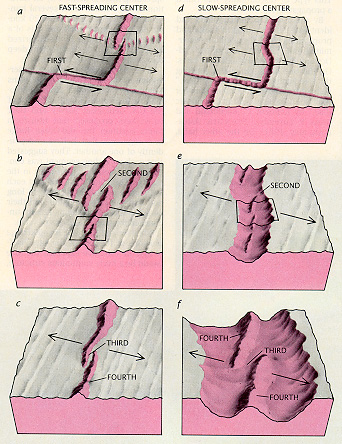

Figure 2. Discontinuities in the Mid-Ocean Ridge can be classified according to shape, size and longevity. For a fast-spreading center, such as the East Pacific Rise, a first-order discontinuity (a) is a transform fault, where rigid plates slide past each other. It offsets the ridge by at least 50 km. A second-order discontinuity (b) is usually a large overlapping spreading center that offsets the ridge by at least 2 km. A third-order discontinuity (c) is a small overlapping spreading center that offsets the ridge by .5 to 2 km. A fourth-order discontinuity (c) is characterized by slight deviations in axial linearity. For a slow-spreading center, such as the Mid-Atlantic Ridge, a first order discontinuity (d) is also typically a transform fault, but it represents a break in a rift valley rather than a ridge crest. A second-order discontinuity (e) is a bend, or jog, in the rift valley. A third-order discontinuity (f) is a gap between chains of volcanoes, whereas a fourth-order discontinuity (f) is a small gap within a chain of volcanoes. First- and second-order structures are usually flanked by distorted crust that formed as the discontinuity evolved. They are known to persist longer than third- and fourth-order discontinuities, because the oceanic crust near the higher-order structures does not show evidence of distortion.